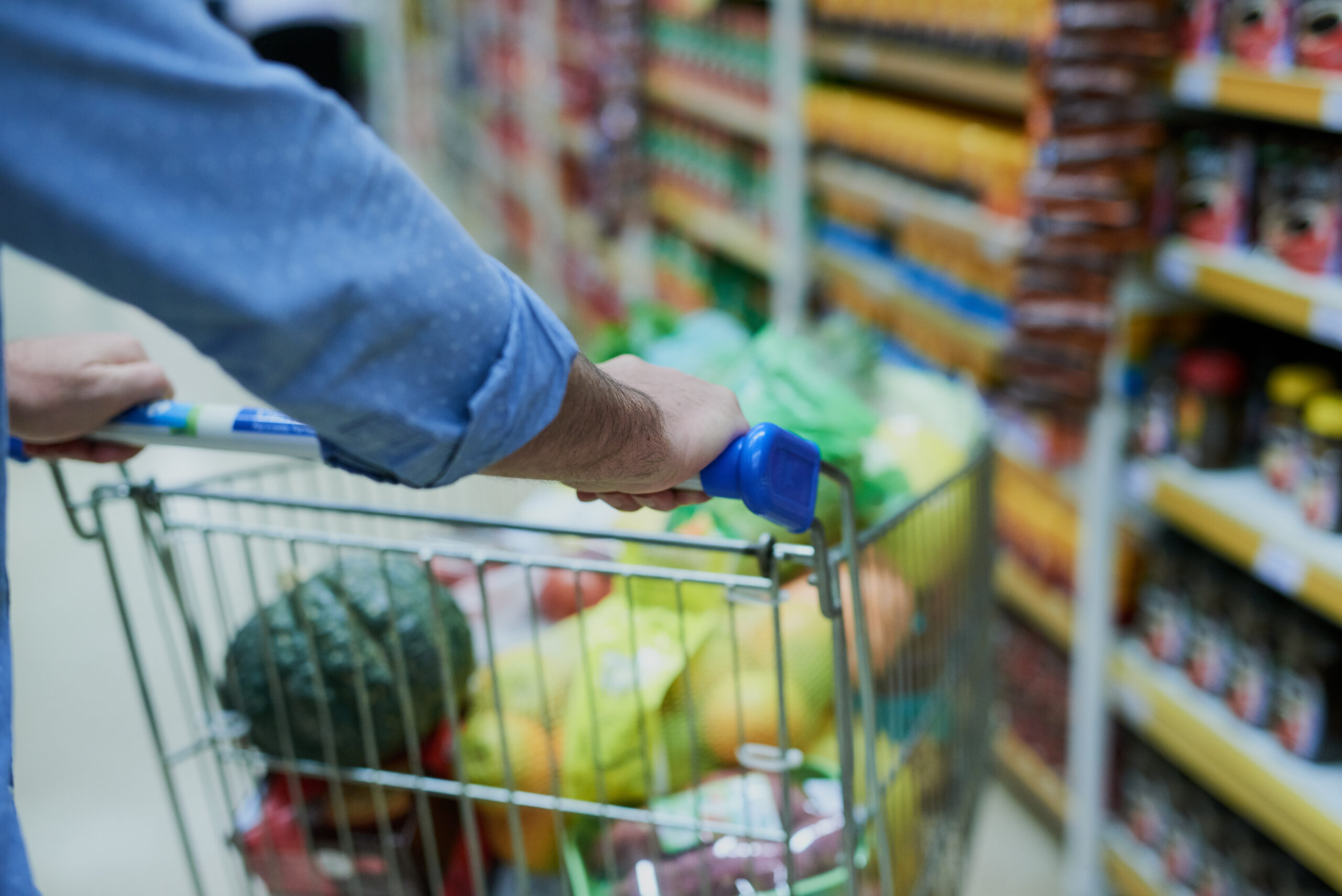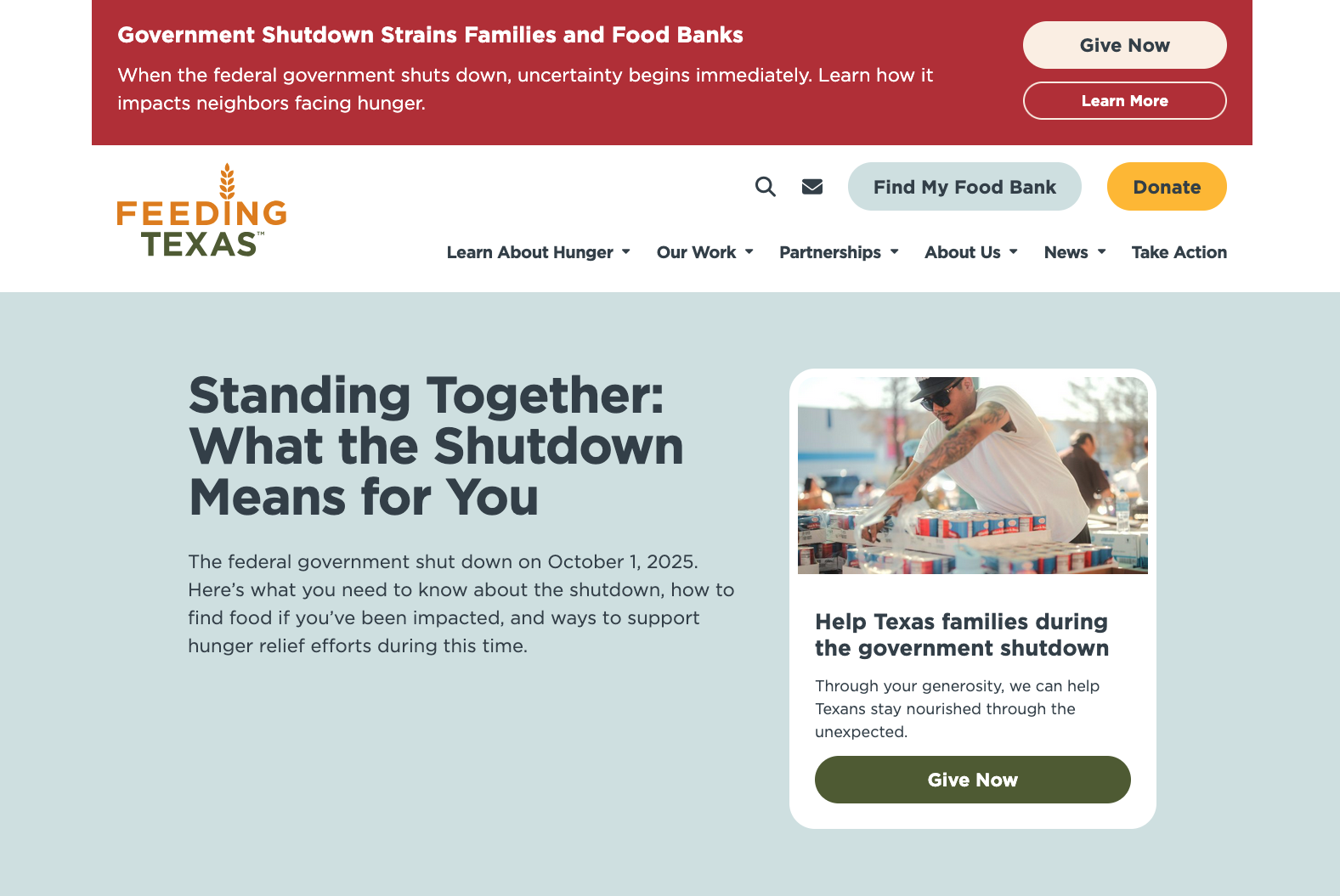
As the federal government shutdown continues, millions of Texans who rely on the Supplemental Nutrition Assistance Program (SNAP) could begin seeing interruptions to their food benefits starting November 1. That’s when families who rely on SNAP benefits could start finding that their EBT cards no longer work to buy groceries, since no new funds will be added. The change will roll out based on each family’s regular benefit schedule, so some will feel the impact right away while others will see it later in the month if the shutdown continues.
In all, SNAP helps about 3.5 million Texans afford groceries each month. Almost half (48%) of all Texans receiving SNAP benefits are children, while just more than 1 in 10 are seniors. Delays would mean the loss of more than $614 million in food benefits statewide if the shutdown lasts the entire month, based on August payment data. Any disruption could leave families, children, and older adults without access to the food they need to stay healthy.
Food and nutrition security is one of Episcopal Health Foundation’s top priorities because good nutrition is essential to good health, especially for those facing the most barriers to being healthy. Lack of good nutrition creates ripple effects that can lead to poor health in many different ways.
That’s why EHF is responding in several ways to this developing situation:
Supporting grantees and partners
EHF is working closely with grantees, clinics, congregations, and other partners that address food and nutrition security to understand the impact and how EHF can be a supportive partner during this time. The goal is to find ways to best assist those organizations that serve families facing SNAP benefit delays.
Providing data and research for perspective
EHF is also helping provide data and context to understand what’s at stake for Texans.
Even before the uncertainty around SNAP benefit delays, EHF’s statewide poll found that 80% of Texans say limited access to affordable, healthy food is a problem, and 30% said it’s difficult for them to afford food.
The most recent enrollment numbers analyzed by EHF show that of all Texans who participate in SNAP, about 14% are under age 5, 34% are ages 5 to 17, and 11% are 65 or older.
Texas Food Insecurity Rates and SNAP Eligibility
Hover over each county for more details
To better understand food insecurity rates and access to SNAP benefits, EHF’s interactive map shows county-level food insecurity rates across Texas as well as SNAP enrollment data. Using monthly SNAP enrollment data provided by Texas Health and Human Services and Census population data, we use the map to estimate how many people are experiencing food insecurity and the presence of SNAP in each county.
Another county-by-county analysis by Every Texan shows that 11% of all Texans use SNAP benefits, but that rate jumps to 25% in many South Texas counties. Most counties in Central and East Texas, and along the Gulf Coast, hover around 13% of the total population. In Harris County alone, more than 640,000 residents received SNAP benefits in August.
EHF research found that Texans enrollment in SNAP is linked to better health outcomes, and enrollees are more likely to stay on their medications and have lower health care costs. Data from Every Texan shows that most households receiving SNAP benefits include at least one adult who is employed but still struggling to make ends meet.
Exploring options at the state and local level
EHF staff are working with partners and policy experts to identify options that could help reduce the impact of delayed benefits at both the state and local levels.
Moments like this highlight why EHF continues to focus on the systems and policies that shape the non-medical factors influencing health. When families cannot access food, it is not just a hunger issue, it is a health issue.
